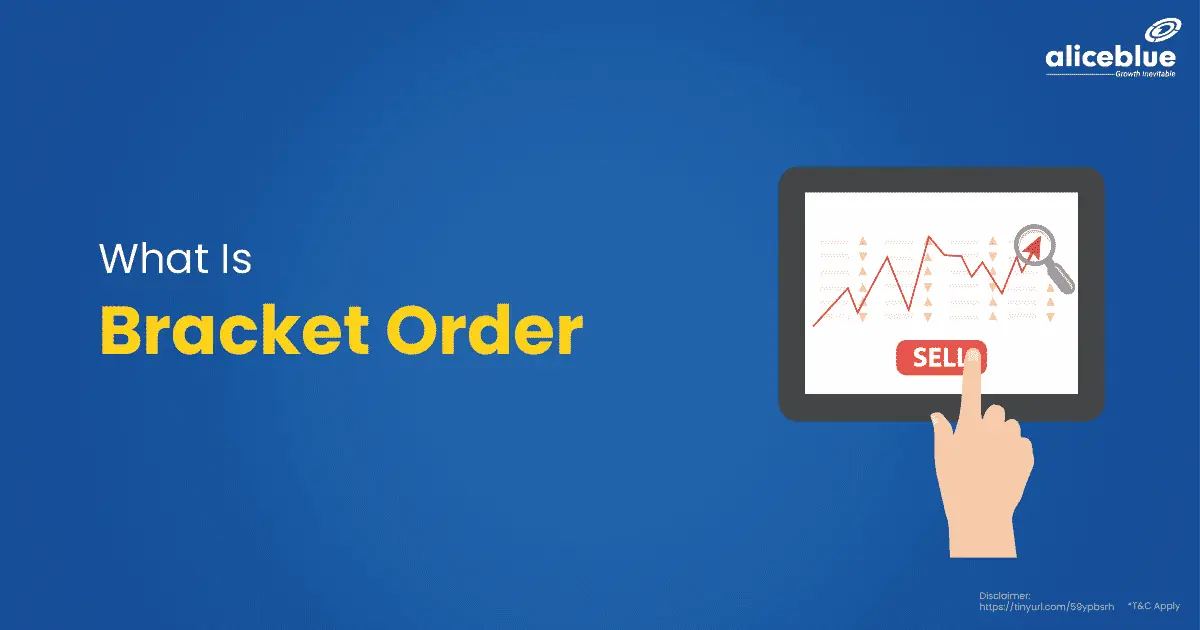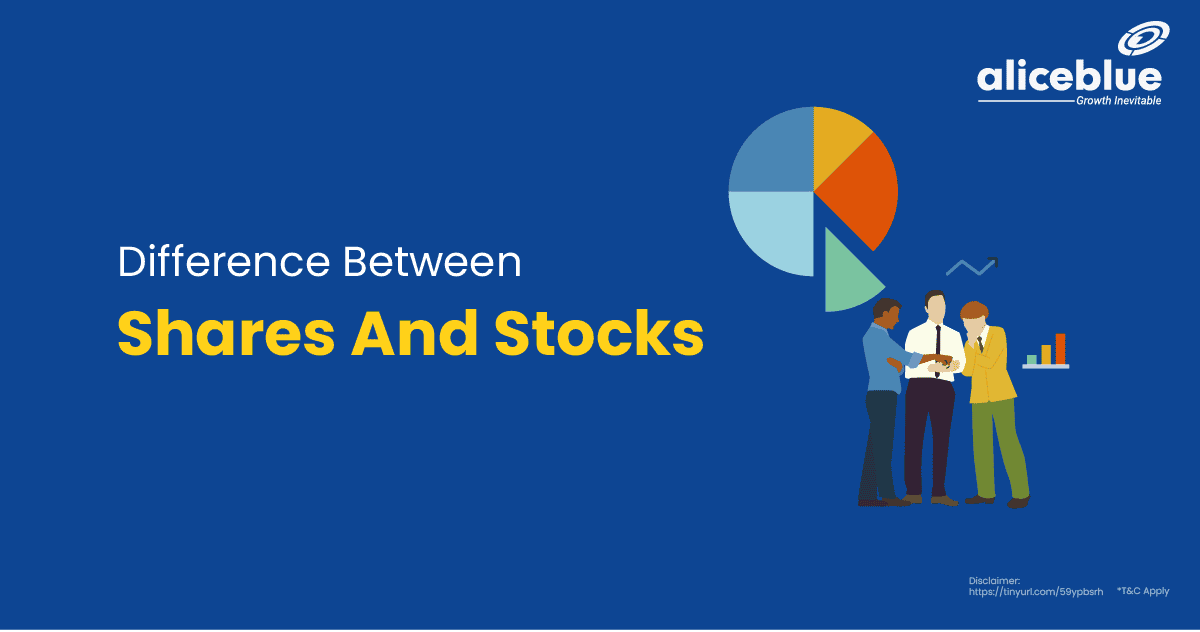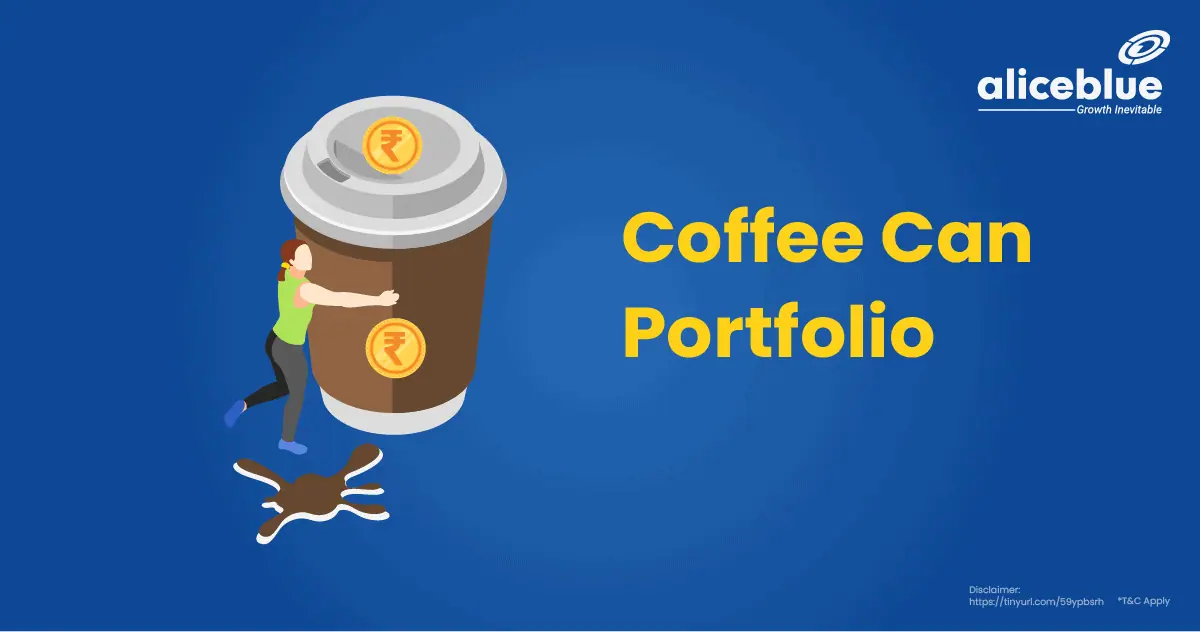A bracket order is a trading order type that combines a main order with two opposite orders: a stop-loss and a target (take profit) order. It helps manage risk by automatically closing the trade when either the target or stop-loss is reached.
Content:
- Bracket Order Meaning
- Bracket Order Example
- How To Place Bracket Order In Alice Blue?
- Cover Order Vs Bracket Order
- Benefits Of A Bracket Order
- Disadvantages Of Bracket Order
- How To Square Off A Bracket Order?
- What Is Bracket Order? – Quick Summary
- What Is Bracket Order In Trading – FAQs
Bracket Order Meaning
A bracket order in trading is a three-component order, consisting of an initial order and two conditional orders – a stop-loss and a take-profit. This setup allows traders to define their profit target and maximum loss limit simultaneously, offering efficient risk management in a single transaction.
A bracket order starts with an initial order to buy or sell a security. Once this order is executed, two additional orders are automatically placed: a stop-loss order and a take-profit order. These secondary orders are set at predefined prices, framing the trade within a ‘bracket’.
This structure allows traders to manage risk effectively. The take-profit order locks in profits by closing the trade at a favorable price, while the stop-loss order limits losses by automatically selling if the price moves unfavorably. This setup automates trade management, balancing potential gains and losses.
For example: a trader buys a stock at Rs. 100 using a bracket order and sets a take-profit at Rs. 110 and stop-loss at Rs. 95. The trade automatically closes if either price is reached.

Bracket Order Example
Imagine a trader placing a bracket order to buy shares at Rs. 200. They set a take-profit order at Rs. 210 to lock in gains and stop-loss at Rs. 195 to limit losses. The trade will automatically close when either price target is hit.
How To Place Bracket Order In Alice Blue?
To place a bracket order in Alice Blue, log into your trading account, select the desired stock, choose the ‘Bracket Order’ option, set your main order price, specify your take-profit and stop-loss levels, and then execute the trade by clicking ‘Buy’ or ‘Sell’.
- Log into Alice Blue Account: Start by accessing your Alice Blue trading account. Ensure you’re ready with the necessary funds and market information for making informed trading decisions.
- Select Desired Stock: Choose the stock you intend to trade. Research and analyze its current market trends and potential future movements to make an educated decision.
- Choose Bracket Order Option: In the trading platform, select the ‘Bracket Order’ option. This type of order will allow you to place a main order along with a predefined stop-loss and take-profit order simultaneously.
- Set Main Order Price: Determine and set the price at which you want to buy or sell the stock. This will be your entry point in the market for the trade.
- Specify Take-Profit and Stop-Loss Levels: Decide and input your desired profit target (take-profit) and the maximum loss you’re willing to bear (stop-loss). These parameters will automatically close your trade when these price levels are hit.
- Execute the Trade: Finalize your setup and execute the trade by clicking on the ‘Buy’ or ‘Sell’ button, depending on whether you’re going long (buying) or short (selling) on the stock.
- Monitoring and Adjustment: After placing the bracket order, monitor the market and your position. While the stop-loss and take-profit orders automate risk management, staying informed allows for timely adjustments if market conditions change significantly.
Cover Order Vs Bracket Order
The main difference between a cover order and a bracket order is that a cover order only pairs a main order with a stop-loss, while a bracket order includes a main order, a stop-loss, and a take-profit order, offering more comprehensive trade management.
| Aspect | Cover Order | Bracket Order |
| Components | Consists of a main order and a stop-loss order. | Includes a main order, a stop-loss, and a take-profit order. |
| Risk Management | Provides risk management with a stop-loss to limit potential losses. | Offers more detailed risk management by setting both profit targets and loss limits. |
| Trade Closure | Trade closes either manually or when the stop-loss is hit. | Trade automatically closes when either the stop-loss or take-profit levels are reached. |
| Complexity | Simpler, as it only involves two components. | More complex, and requires setting three price points. |
| Flexibility | Less flexible, as it does not allow for profit targets. | More flexible, allowing traders to set both upper and lower price limits. |
| Suitability | Suitable for traders who focus only on loss minimization. | Ideal for traders seeking comprehensive trade management with predefined entry, exit, and stop-loss levels. |
Benefits Of A Bracket Order
The main benefits of a bracket order include enhanced risk management through preset stop-loss and take-profit levels, the potential for maximizing profits and minimizing losses, automation in trade closure, disciplined trading by adhering to predetermined exit strategies, and reduced need for constant market monitoring.
- Enhanced Risk Management: Bracket orders allow traders to set predefined stop-loss and take-profit levels, offering a structured approach to managing risk. This setup helps in protecting investments from significant losses and locking in profits at desired levels, making it a proactive risk management tool.
- Maximizing Profits and Minimizing Losses: By setting a take-profit order, traders can ensure they exit a position at a profitable level. Concurrently, the stop-loss order prevents substantial losses, striking a balance between profit maximization and loss minimization.
- Automated Trade Closure: Once a bracket order is placed, the trade will automatically close when prices hit either the stop-loss or take-profit levels. This automation removes the emotional aspect of trading decisions and ensures discipline in executing the trading strategy.
- Disciplined Trading Strategy: Bracket orders enforce a disciplined trading approach by requiring traders to define exit strategies for both profitable and unprofitable scenarios upfront. This planning fosters a more strategic and less impulsive approach to trading.
- Reduced Need for Constant Market Monitoring: Since bracket orders automatically execute based on preset price levels, they lessen the need for a continuous market watch. Traders can be assured that their trade parameters are in place, reducing the stress of having to react to every price movement.
- Suitable for Various Market Conditions: Whether in a volatile or stable market, bracket orders are effective. In volatile markets, they provide a safety net against sudden swings, while in stable markets, they help in capturing incremental profits without constant monitoring.
Disadvantages Of Bracket Order
The main disadvantages of bracket orders include limited flexibility in adjusting orders after placement, potential missed opportunities if markets move favorably beyond the set take-profit, and the complexity of setting three price points, which can be challenging for inexperienced traders to manage effectively.
- Limited Flexibility Post-Placement: Once a bracket order is placed, modifying it can be restrictive. Traders can’t easily adjust the take-profit or stop-loss levels in response to changing market conditions, potentially leading to suboptimal trade outcomes compared to more adaptable order types.
- Missed Opportunities Beyond Take-Profit: If the market moves favorably beyond the set take-profit level, traders might miss out on additional gains. The order automatically closes at the take-profit point, which could limit potential profits in a rapidly ascending market.
- Complexity in Setting Price Points: Bracket orders require setting three specific prices – the main order, take-profit, and stop-loss. This complexity can be daunting for beginners or less experienced traders, increasing the likelihood of errors in price setting, and potentially leading to unanticipated losses.
- Risk of Premature Closure: The market might momentarily hit the stop-loss or take-profit levels, triggering the closure of the position, even if the overall market trend could have been profitable. This can result in trades closing too early, and missing out on potential profits.
- Requirement for Active Monitoring: Despite their automated nature, bracket orders still require active monitoring, especially in volatile markets. Sudden market changes might necessitate quick decision-making to modify or cancel the order, demanding constant attention from the trader.
How To Square Off A Bracket Order?
To square off a bracket order, manually execute a counter trade: sell if you initially bought, or buy if you sold. Alternatively, the trade will automatically square off when either the take-profit or stop-loss levels are hit, as per the predefined settings.

What Is Bracket Order? – Quick Summary
- A bracket order combines an initial trade with a stop-loss and a take-profit order, allowing traders to set their profit goals and loss limits in one transaction, thereby streamlining risk management efficiently.
- To place a bracket order in Alice Blue, log into your account, select a stock, pick ‘Bracket Order’, set the main price, take profit, and stop-loss levels, and execute the trade with ‘Buy’ or ‘Sell’.
- The main distinction between a cover order and a bracket is that a cover order pairs a main order with just a stop-loss, while a bracket order includes a main order, a stop-loss, and a take-profit, providing more extensive trade management options.
- The main benefits of bracket orders lie in improved risk management with predefined stop-loss and take-profit levels, enabling maximized profits and minimized losses, automated trade closure, disciplined execution with set exit strategies, and less necessity for continual market monitoring.
- The main drawbacks of bracket orders are their limited flexibility for adjustments post-placement, the chance of missing further gains if the market surpasses the take-profit level, and the complexity of setting three specific price points, often challenging for new traders.
- To square off a bracket order, either manually conduct a counter trade (sell if you bought, or buy if you sold) or let it automatically close when it reaches the pre-set take-profit or stop-loss levels.
- Open free demat account with Alice Blue in 15 minutes today! Invest in Stocks, Mutual Funds, Bonds & IPOs for Free. Also, trade at just ₹ 15/order and save 33.33% brokerage on every order.
What Is Bracket Order In Trading – FAQs
What Is Bracket Order?
A bracket order is a trading order that combines a main order with a stop-loss and a take-profit order. It automatically closes the trade when either the profit or loss targets are reached.
What Are The Benefits Of Bracket Order?
The main benefits of a bracket order are enhanced risk management through predetermined stop-loss and take-profit levels, the potential for automated profit locking, and disciplined trading by setting clear entry and exit points in a single transaction.
What Is the Difference Between Cover Order And Bracket Order?
The main difference is that a cover order pairs a main order with only a stop-loss, while a bracket order combines a main order with both a stop-loss and a take-profit order.
What Is The Validity Of Bracket Order?
The validity of a bracket order is typically limited to one trading session. It must be squared off or reach the set take-profit or stop-loss levels within the same day it’s placed.
Can We Cancel The Bracket Order?
Yes, you can cancel a bracket order before it is executed or before the take-profit or stop-loss orders are triggered. However, after partial fulfillment of the main order, only the unexecuted part can be canceled.
When Should Brackets Be Used?
Brackets should be used when you seek to manage risks effectively in volatile markets, require clear profit targets and loss limits, and want automated trade management for intraday trading within a single trading session.






